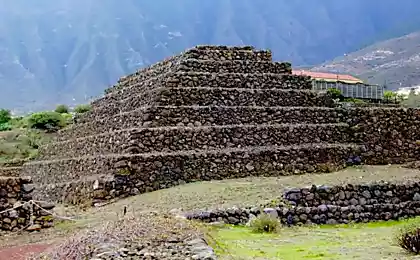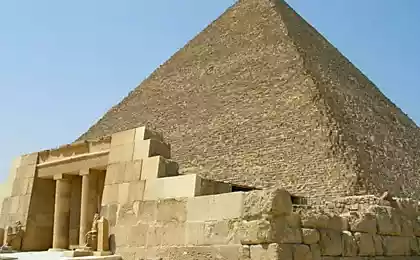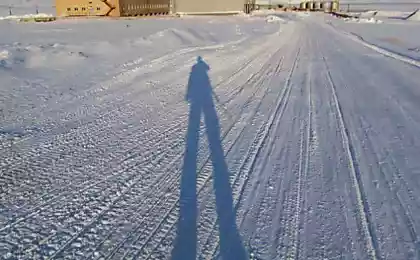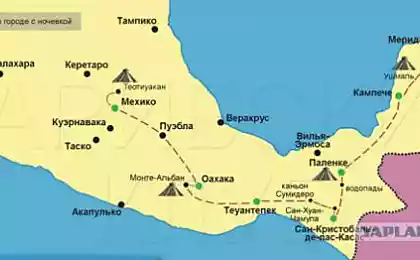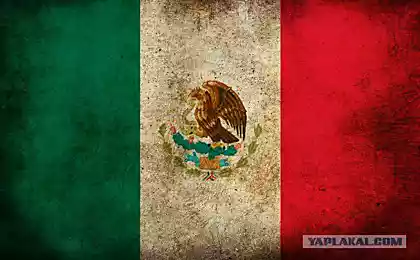833
El Castillo
El Castillo - Temple facility, surviving among the ruins of the ancient Mayan city of Chichen Itza in the Yucatan peninsula in Mexico. Kukulcan Maya god Quetzalcoatl is an analogue.
8 ph © Gabrielo74 / charlie_bear
1) Chichen Itza - this is one of the largest and most magnificent centers of the Mayan culture, which served to hold the most important religious ceremonies. It is believed that it was founded in the VIII century, and two centuries later captured by foreign invaders Toltecs, led by Xie Acatl Topiltzin, who was not only the ruler of the people, but also the high priest of the god Quetzalcoatl, or Kukulkan, as it was called Maya. The invaders chose Chichen Itza as their capital, making it the most populous city in the Yucatan Peninsula.
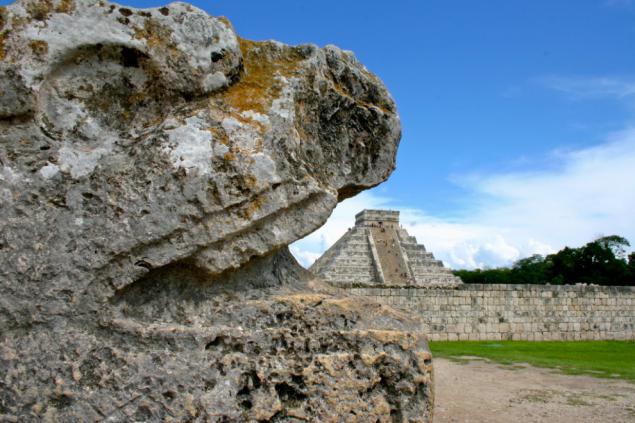
2) The Chichen Itza ancient architects erected in honor of the Sacred Serpent Temple grand-El Castillo, or as it was called Europeans, El Castillo (in Spanish - "lock"). The building is placed in the center of the city's skyline, making the dominant, visible from any point
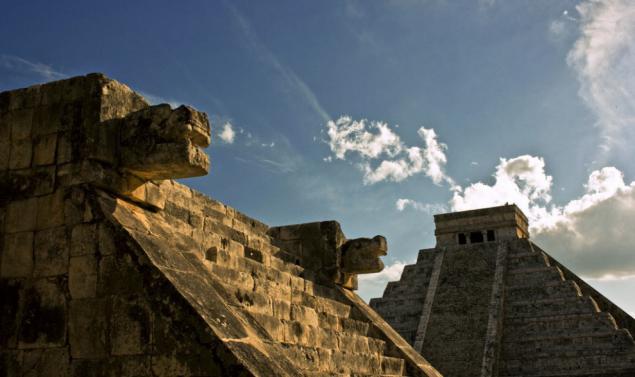
3) The base of the pyramid is a square with a side of 55, 5 m, height of the building is 25 m. The faces of the pyramid of nine terraces - one for each region of the kingdom of the dead. So imagine the Maya underworld - the place where they would go after death.

4) Go to the top of the structure is four broad steep stairs, divided by 18 spans, each of which corresponds to a certain month of the year, as the Mayan calendar had 18 months.

5) All the stairs, in turn, account for 91 on stage. If this figure is multiplied by four (the number of steps) and add another stage - a platform on top of which stands the temple, you get 365 - the number of days in the year. Perhaps, the pyramid also served for astronomical observations, because it is also strictly oriented to the cardinal.
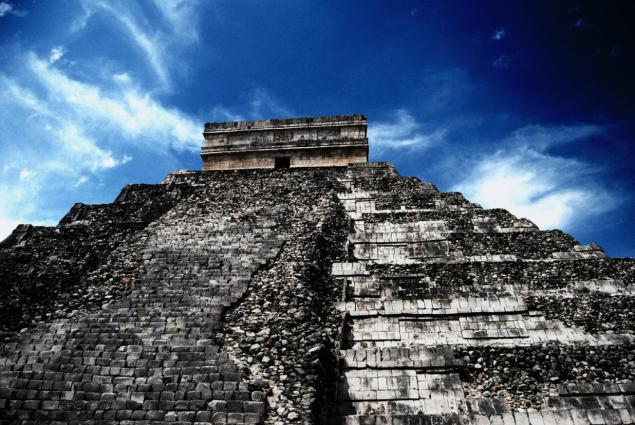
6) But the sanctuary of the Feathered Serpent has other phenomenal properties. If builders have shifted him to at least one degree, they would be unable to achieve special visual effect that occurs twice a year, during the spring and autumn equinox

7) Stairs, running along the north side of the pyramid, the bottom ends of the edges of the snake heads, symbols of the god Kukulkan. At certain times on the steps of the ladder of triangles of light and shadow made up a giant image of the Sacred Serpent, slowly sliding to the bottom of the pyramid. The illusion lasts 3 hours and 22 minutes. Ancient Maya, watch the action, probably he thought that Kukulcan back to life and went down to the ground.

8) However, this is not the only "special effect" stunning building. Maya again surprised scientists have established that the pyramid is a ... giant cavity. The sound of the steps people climbing the stairs on the outside of structures inside the pyramid is transformed into an exact imitation of the voice quetzal - the sacred bird of the Maya.
Wonders of the temple attracted to Chichen Itza travelers from around the world, the city became one of the most visited monuments of the ancient Maya. But many years of it, nothing was known: in the XIV century for unknown reason Chichen Itza suddenly left the inhabitants, and gradually the jungle swallowed it.
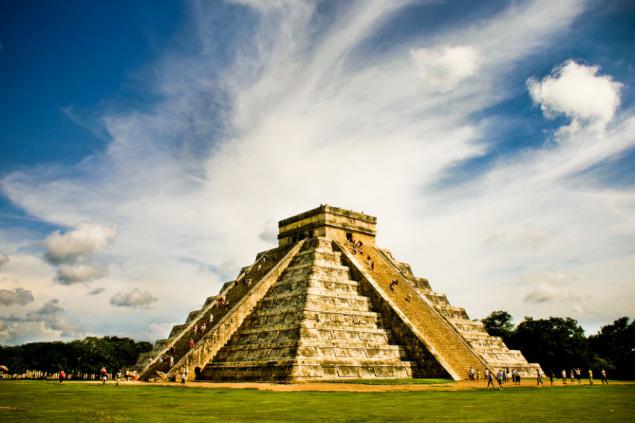
Source:
8 ph © Gabrielo74 / charlie_bear
1) Chichen Itza - this is one of the largest and most magnificent centers of the Mayan culture, which served to hold the most important religious ceremonies. It is believed that it was founded in the VIII century, and two centuries later captured by foreign invaders Toltecs, led by Xie Acatl Topiltzin, who was not only the ruler of the people, but also the high priest of the god Quetzalcoatl, or Kukulkan, as it was called Maya. The invaders chose Chichen Itza as their capital, making it the most populous city in the Yucatan Peninsula.

2) The Chichen Itza ancient architects erected in honor of the Sacred Serpent Temple grand-El Castillo, or as it was called Europeans, El Castillo (in Spanish - "lock"). The building is placed in the center of the city's skyline, making the dominant, visible from any point

3) The base of the pyramid is a square with a side of 55, 5 m, height of the building is 25 m. The faces of the pyramid of nine terraces - one for each region of the kingdom of the dead. So imagine the Maya underworld - the place where they would go after death.

4) Go to the top of the structure is four broad steep stairs, divided by 18 spans, each of which corresponds to a certain month of the year, as the Mayan calendar had 18 months.

5) All the stairs, in turn, account for 91 on stage. If this figure is multiplied by four (the number of steps) and add another stage - a platform on top of which stands the temple, you get 365 - the number of days in the year. Perhaps, the pyramid also served for astronomical observations, because it is also strictly oriented to the cardinal.

6) But the sanctuary of the Feathered Serpent has other phenomenal properties. If builders have shifted him to at least one degree, they would be unable to achieve special visual effect that occurs twice a year, during the spring and autumn equinox

7) Stairs, running along the north side of the pyramid, the bottom ends of the edges of the snake heads, symbols of the god Kukulkan. At certain times on the steps of the ladder of triangles of light and shadow made up a giant image of the Sacred Serpent, slowly sliding to the bottom of the pyramid. The illusion lasts 3 hours and 22 minutes. Ancient Maya, watch the action, probably he thought that Kukulcan back to life and went down to the ground.

8) However, this is not the only "special effect" stunning building. Maya again surprised scientists have established that the pyramid is a ... giant cavity. The sound of the steps people climbing the stairs on the outside of structures inside the pyramid is transformed into an exact imitation of the voice quetzal - the sacred bird of the Maya.
Wonders of the temple attracted to Chichen Itza travelers from around the world, the city became one of the most visited monuments of the ancient Maya. But many years of it, nothing was known: in the XIV century for unknown reason Chichen Itza suddenly left the inhabitants, and gradually the jungle swallowed it.

Source:
